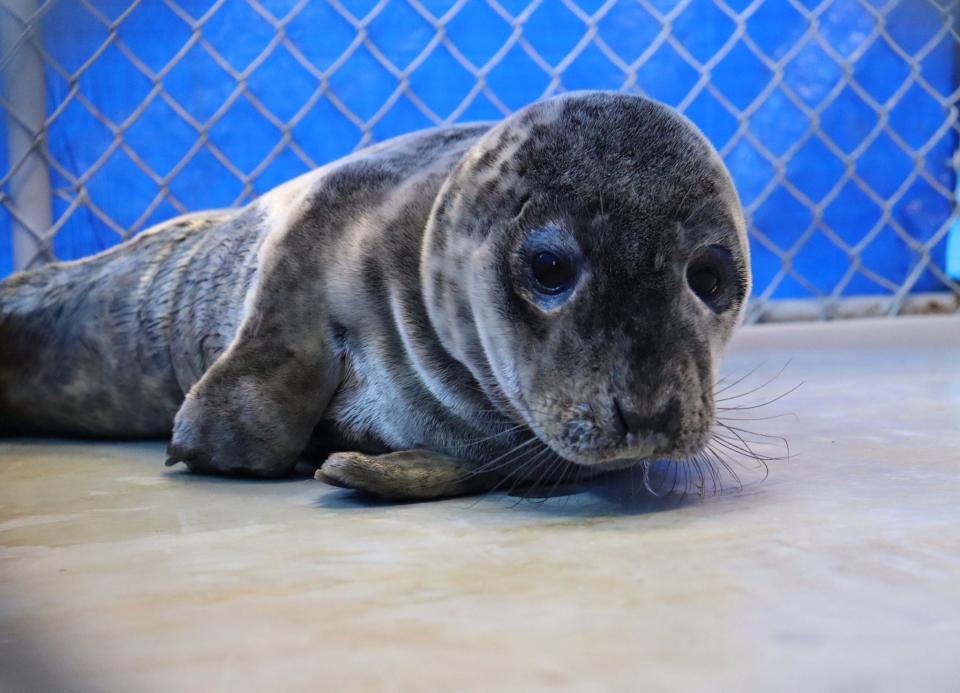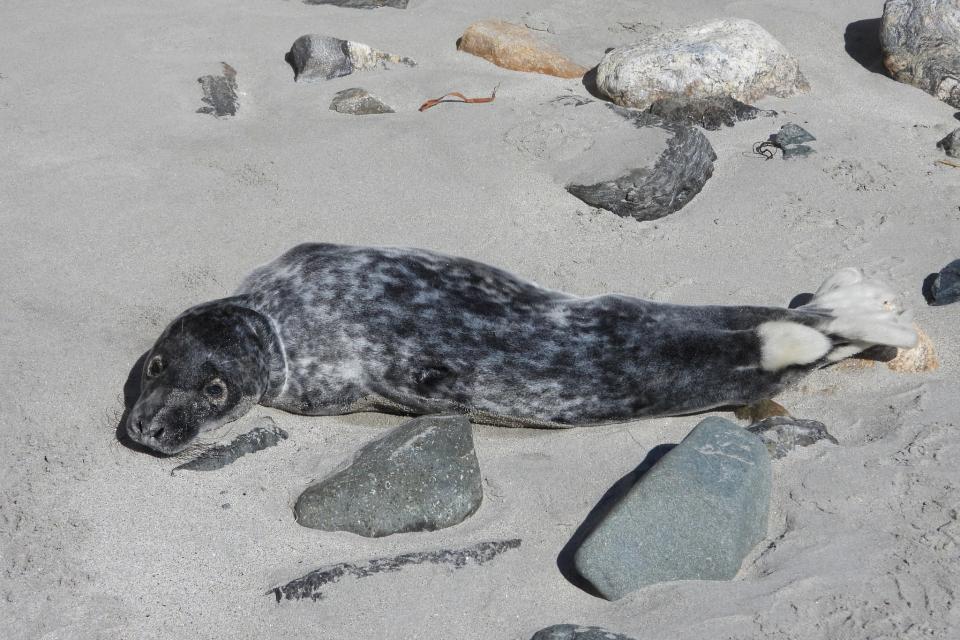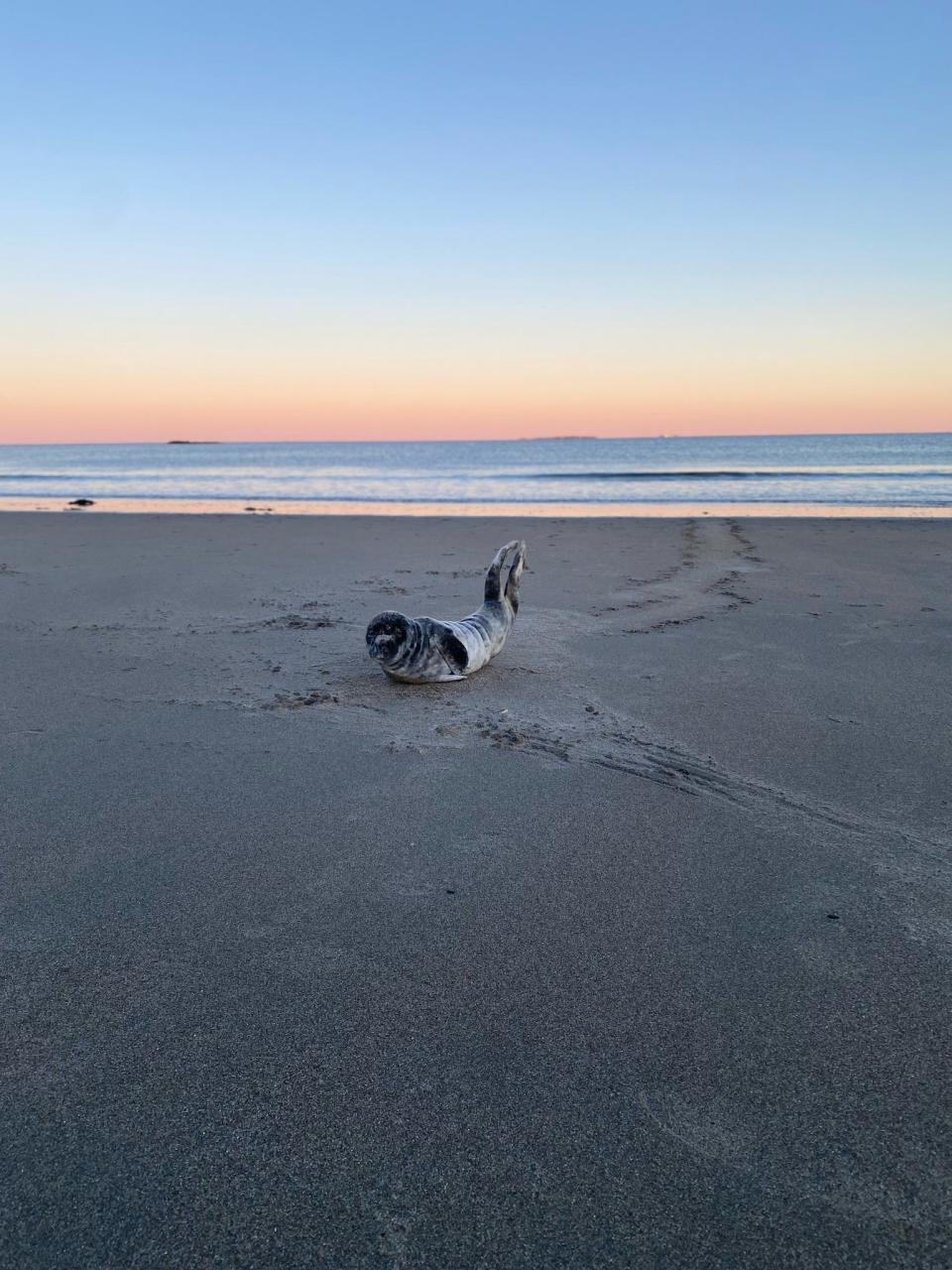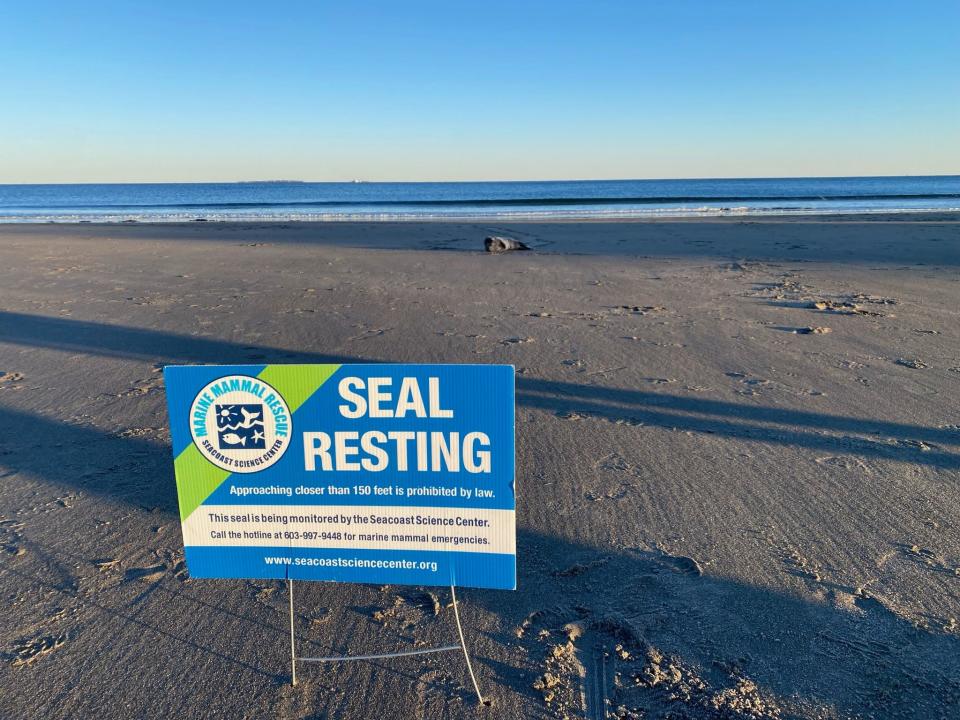Butter Pecan the seal rescued at Wallis Sands: What beach visitors should know
RYE — A gray male seal recently rescued from Wallis Sands Beach is recovering at the National Marine Life Center in Buzzards Bay after stranding and being found thin, dehydrated and wounded.
The weakened seal, named Butter Pecan, was safely rescued by the Seacoast Science Center Marine Mammal Rescue crew on Feb. 19. The rescue team monitored the seal for 24 hours, as it does in most instances, before stepping in to transport it.

When admitted, the seal was suffering from wounds on its left front flipper and right hind flipper, mild hyponatremia, increased total bilirubin, low venous oxygen, nasal discharge and diarrhea, according to the National Marine Life Center.
Connie Merigo, president and chief executive officer of the National Marine Life Center, reported the seal is improving at the nonprofit's animal hospital.
“He’s turning a corner, looking much brighter and is starting to look for food,” she said Monday.

Butter Pecan has tested negative for a parasite and is learning to eat on its own, though it will continue to be checked by the National Marine Life Center staff before being released.
“He’s got a very, very thin blubber layer, so once we teach him how to eat, then he’s got to put on some weight before we put him back out there,” Merigo added.
Butter Pecan’s age cannot be confirmed but Merigo expects the seal was detaching from its mother at the time of his stranding.
"It’s hard to say because he’s a little clumsy with the fish (he’s eating), and there were no internal parasites. Usually, you start seeing those when they’re fish eaters. I would estimate he probably nursed from his mom and was probably in the weanling period when he got into some trouble,” she said.

Seacoast Science Center Marine Mammal Rescue community outreach manager, Brian Yurasits, said Butter Pecan was experiencing “reverse-molt,” indicating it may have separated from its mother earlier than when is typical for gray seals.
Gray seal pups are all born with lanugo, a white coat of fur that they molt after birth, beginning with their extremities. However, gray seal pups who reverse-molt will molt their body first and hold onto the fur in their extremities due to stress.
“Basically what a reverse-molt tells us is that it might have been abandoned or separated from its mother early. It's a sign that the animal was pretty much on its own from its mother quicker than it should be,” Yurasits said.
When is gray seal pupping season?
Gray seal pupping season typically runs its course in December and January, then pups wean from their mothers about three weeks after birth. Due to the timing of pupping season, Yurasits noted that Seacoast Science Center Marine Mammal Rescue has recently received several phone calls about gray seals in the group’s coverage territory in the Seacoast and down into Essex, Massachusetts.
“Weather can play a role in seal strandings, as we usually see elevated stranding numbers following strong storms and rough seas. These storms can bring animals near shore that are seeking a place to rest,” Yurasits said. “Gray seals don't rely on snow or cold weather to survive, they do live in our waters year-round, and so snowfall and temperature do not play a major role in leading these animals to strand. Primarily, we see elevated numbers of gray seal strandings this time of year because these young animals are naturally separating from their mothers and are figuring out life in the big blue ocean on their own.”
“We also see seals strand due to affliction by illness and parasites, which are both common in gray seals,” he added.
Gray seals and harbor seals are the two seal species found in the Seacoast year-round, while in the winter months, the region is also visited by harp and hooded seals that arrive from Arctic waters.
To date this year, Seacoast Science Center Marine Mammal Rescue has responded to 22 animals, spanning from New Hampshire and down into Essex County, Massachusetts, nine of which have been gray seals.
The federal Marine Mammal Protection Act requires spectators to stay 150 feet away from all seals, wild dolphins and porpoises.

“The pups need a lot of rest. They’re almost like puppies or babies in that once their belly fills, they need to rest,” Merigo said.
What to do if you spot a seal
Seacoast Science Center Marine Mammal Rescue advises beachgoers to keep their dogs away from seals stranded on beaches, in addition to not pouring water on the animal, nor giving it food or water. The animal should not be touched, moved, or covered with a blanket or towel.
All dead and alive marine mammals stranded on the beach should be reported to the Seacoast Science Center Marine Mammal Rescue hotline with information about its location, size, coloring and behavior. The hotline can be called at (603) 997-9448.
This article originally appeared on Portsmouth Herald: Butter Pecan the seal rescued at Wallis Sands in Rye NH

